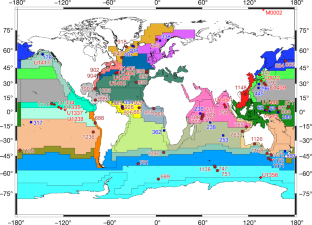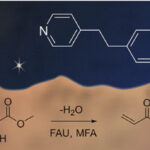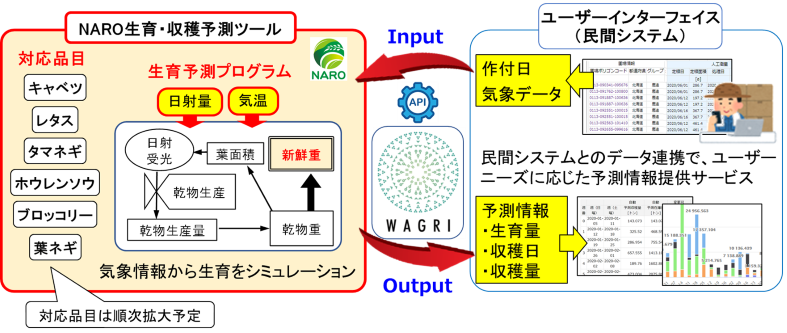50年以上にわたる海底堆積物コアの丹念な研究が、驚きの結果をもたらした Painstaking study of 50-plus years of seafloor sediment cores has surprise payoff
2023-01-04 ライス大学
この研究は、今週Nature誌に掲載されたもので、気候の温暖化によって有機炭素の埋没が減少し、大気中に戻される炭素の量が増加する可能性があることを示唆しています。
ライス大学、テキサスA&M大学、リーズ大学、ブレーメン大学の研究者らは、国際海洋発見プログラム(IODP)およびその前身である1,500以上の船上探査のうち81回で採取した海底の泥質コアのデータを分析しました。この研究は、過去3000万年にわたる有機炭素の埋蔵量について、これまでで最も詳細に説明するものであり、地球の長期的な炭素循環の力学について、科学者が学ぶべきことが多いことを示唆しています。
論文の責任著者であるテキサスA&Mの海洋学者Yige Zhangは、「もし、我々の新しい記録が正しいことが判明すれば、有機炭素循環に関する我々の理解の多くを変えることになるでしょう」と語っています。海が暖かくなるにつれて、有機炭素が海底堆積物系に埋もれる道を見つけるのが難しくなるでしょう。”と語っています。
炭素は生命の主成分であり、炭素は、植物や動物が成長し、分解するにつれて、地球の大気圏と生物圏の間で常に循環しています。また、炭素は数百万年かけて地球を循環することもある。その始まりは、地殻変動による沈み込み帯で、海の上にある比較的薄い地殻プレートが、大陸の上にある厚い地殻プレートの下に引きずり込まれるように移動する。沈み込んだ海洋地殻は加熱され、炭素の大部分は火山から二酸化炭素(CO2)として大気中に戻ってくる。
科学者たちは、海洋堆積物に埋もれる炭素の量について長い間研究してきた。海底から掘削したコアには、数千万年かけて堆積した層が含まれている。放射性年代測定法などを用いると、特定の堆積物がいつ作られたかがわかる。また、堆積物に含まれる鉱物や生物の微小な骨格を調べることで、過去の地球環境について多くのことがわかる。
Zhang氏によれば、これは特に約1500万年前の中新世と呼ばれる時期のことだという。従来の科学の常識では、カリフォルニア州の有機物を多く含む「モントレー層」に代表されるように、この時期には大量の有機炭素が埋もれていると考えられていた。今回の研究成果は、その代わりに、過去2300万年ほどの間に、この区間に最も少ない量の有機炭素が埋蔵されたことを示唆している。
<関連情報>
地球海洋における新第三紀の有機炭素の埋蔵量 Neogene burial of organic carbon in the global ocean
Ziye Li,Yi Ge Zhang,Mark Torres & Benjamin J. W. Mills
Nature Published:04 January 2023
DOI:https://doi.org/10.1038/s41586-022-05413-6

Abstract
Organic carbon buried in marine sediment serves as a net sink for atmospheric carbon dioxide and a source of oxygen1,2. The rate of organic carbon burial through geologic history is conventionally established by using the mass balance between inorganic and organic carbon, each with distinct carbon isotopic values (δ13C)3,4. This method is complicated by large uncertainties, however, and has not been tested with organic carbon accumulation data5,6. Here we report a ‘bottom-up’ approach for calculating the rate of organic carbon burial that is independent from mass balance calculations. We use data from 81 globally distributed sites to establish the history of organic carbon burial during the Neogene (roughly 23–3 Ma). Our results show larger spatiotemporal variability of organic carbon burial than previously estimated7,8,9. Globally, the burial rate is high towards the early Miocene and Pliocene and lowest during the mid-Miocene, with the latter period characterized by the lowest ratio of organic-to-carbonate burial rates. This is in contrast to earlier work that interpreted enriched carbonate 13C values of the mid-Miocene as massive organic carbon burial (that is, the Monterey Hypothesis)10,11. Suppressed organic carbon burial during the warm mid-Miocene is probably related to temperature-dependent bacterial degradation of organic matter12,13, suggesting that the organic carbon cycle acted as positive feedback of past global warming.



